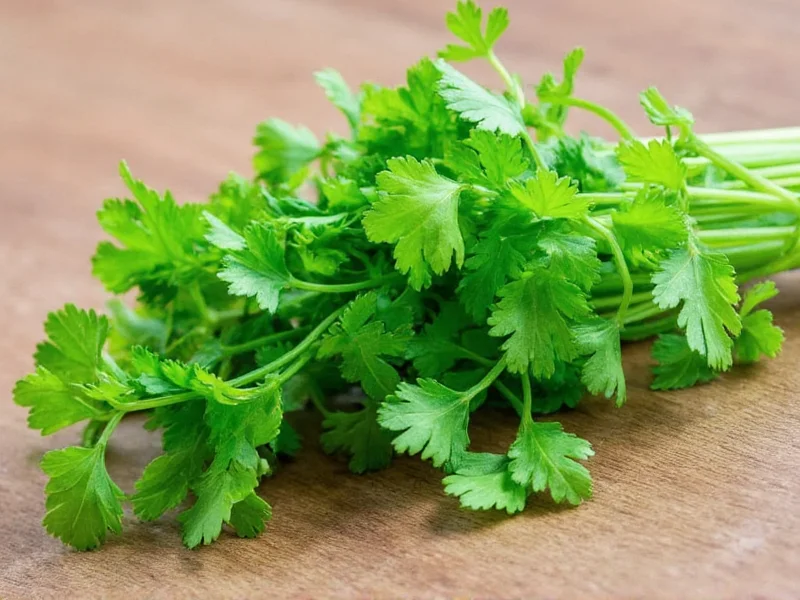The Botanical Reality: One Plant, Two Names
Despite common confusion, there is no botanical difference between coriander and cilantro. Both terms describe Coriandrum sativum, an annual herb in the Apiaceae family. The naming discrepancy stems entirely from linguistic traditions rather than plant biology. This single plant produces multiple culinary components:
| Plant Component | UK/Commonwealth Terminology | US Terminology |
|---|---|---|
| Fresh leaves and stems | Coriander | Cilantro |
| Dried seeds | Coriander seeds | Coriander |
| Roots | Coriander roots | Cilantro roots |
| Dried fruit (whole) | Coriander | Coriander |
Tracing the Linguistic Divide
The word “coriander” entered English through French (coriandre) from Greek (koriannon), which may derive from “koros” (bedbug) – possibly referencing the plant’s pungent smell when crushed. Spanish adapted this as “cilantro,” which entered American English through Mexican culinary influence.
When examining regional usage patterns, we see clear distinctions in culinary contexts. British cookbooks consistently use “coriander” for both fresh leaves and dried seeds. American recipes specify “cilantro” for the herb and “coriander” for the spice. This explains why international cooks encounter confusion when following recipes across regional boundaries.
Culinary Applications Across Regions
Understanding coriander vs cilantro terminology prevents recipe mishaps. In Southeast Asian and Indian cuisines, “coriander leaves” universally refers to the fresh herb, while “coriander seeds” indicates the spice. Mexican recipes specify “cilantro” for the fresh herb essential in salsas and guacamole.
The flavor profile differs significantly between plant parts. Fresh cilantro/coriander leaves offer a bright, citrusy note with possible soapy undertones (due to genetic variation in OR6A2 receptors). Coriander seeds provide warm, nutty, slightly citrus flavor that’s completely different from the leaves. This explains why substituting dried seeds for fresh leaves – or vice versa – dramatically alters dish outcomes.
Global Shopping Guide: What to Request
Navigating international markets requires terminology awareness. In London’s Borough Market, asking for “coriander” gets you the fresh herb. In Los Angeles’s Grand Central Market, you’d request “cilantro” for the same product. Understanding these regional naming conventions for coriander prevents shopping confusion.
When substituting ingredients, remember that dried coriander seeds cannot replace fresh cilantro in dishes like chimichurri or Thai curry. For authentic flavor in regional cuisines, use fresh leaves where recipes specify cilantro/coriander greens. The difference between coriander and cilantro usage directly impacts recipe authenticity.
Addressing Common Misconceptions
Many believe cilantro and coriander are different plants. This misunderstanding often leads to incorrect substitutions. Some also think the “soapy taste” perception applies to both plant parts, but this genetic sensitivity specifically affects fresh leaf consumption, not the seeds.
Another frequent error involves seed preparation. While coriander seeds can be used whole or ground, they benefit from toasting to enhance flavor – a technique unnecessary for fresh leaves. Recognizing these distinctions between coriander plant parts prevents culinary mistakes when following international recipes.
Practical Usage Tips for Cooks
When working with fresh cilantro/coriander, add it at the end of cooking to preserve volatile flavor compounds. For coriander seeds, dry toast them in a skillet until fragrant before grinding. Understanding coriander vs cilantro preparation methods maximizes flavor potential.
Storage differs significantly between plant components. Fresh leaves last 7-10 days refrigerated in a damp paper towel, while seeds maintain potency for 6-12 months in airtight containers. This practical knowledge about coriander plant parts ensures optimal ingredient usage regardless of regional terminology.











 浙公网安备
33010002000092号
浙公网安备
33010002000092号 浙B2-20120091-4
浙B2-20120091-4